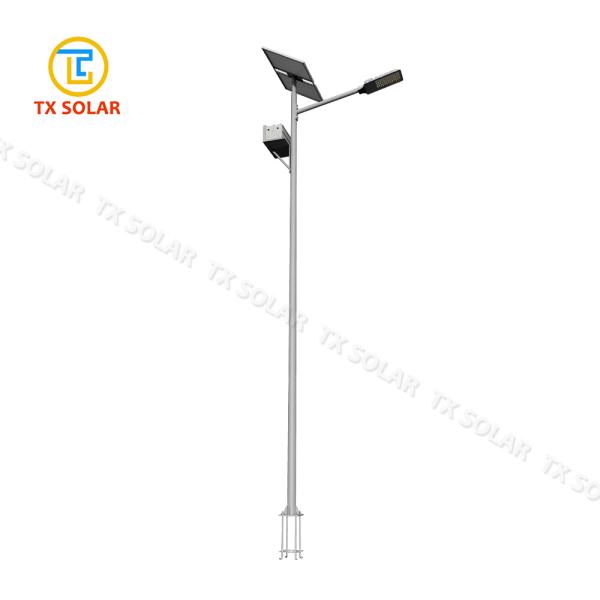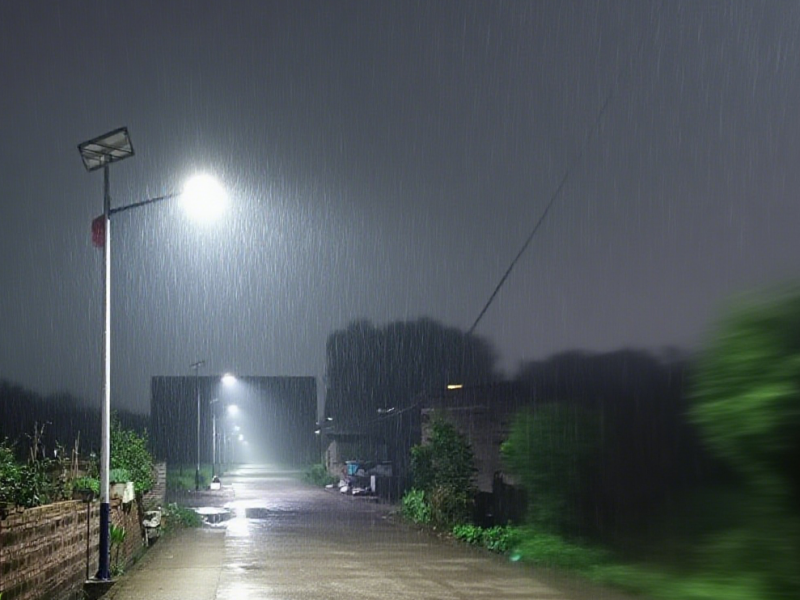Few people know that solar street lamps have a parameter called the rainy day limit. This parameter refers to the number of days a solar street lamp can operate normally even during consecutive rainy days without solar energy. Based on these parameters, you can determine that a solar street lamp can operate normally on rainy days.
How solar street lamps work on rainy days
Because the solar street lamp's battery has the ability to store electrical energy, it absorbs sunlight through the solar panels and stores it in the battery. Consequently, when the solar panels can no longer absorb solar energy on rainy days, the controller tells the battery to power itself instead.
Typically, the default rainy day limit for most solar street lamps is three days. Integrated solar street lamps have a longer rainy day limit, ranging from five to seven days. This means that within the specified number of days, even if the solar street lamp cannot be replenished with solar energy, it can still operate normally. However, once this limit is exceeded, the solar street lamp will cease to function properly.

TIANXIANG solar street lamps utilize intelligent control to automatically adjust their brightness based on sky brightness throughout the day and individual needs in various environments. They also allocate the proportion of solar cell power used for lighting and storage, discharging the power in stages according to the streetlight's brightness. This ensures the streetlight is fully charged on sunny days while still being usable on rainy days, thus minimizing energy waste and achieving greater energy efficiency. Intelligence is also a key feature of our products. Each streetlight is equipped with an intelligent control system that automatically adjusts its lighting mode based on ambient light intensity, ensuring lighting needs while maximizing energy conservation.
The photovoltaic modules and batteries in a solar streetlight determine the number of rainy days it can withstand, making these two parameters crucial considerations when choosing a solar streetlight. If your area experiences frequent humid weather and rainy days, consider choosing a solar streetlight with a higher frequency of rainy days.
When choosing a solar streetlight, consider your local climate. If your area experiences frequent rainy days, choose a solar streetlight with a higher frequency of rainy days. When choosing a solar street lamp, quality is crucial. Careful selection is required for the lamp, battery, and controller. High-quality products guarantee longer life.
Typically, solar street lamps operate for eight hours per day. Manufacturers typically set the light to high intensity for the first four hours and half intensity for the remaining four hours. This allows the lights to operate for two to three days on rainy days. However, in some areas, rain can last up to two weeks, which is clearly insufficient. In these cases, an intelligent control system can be installed. This system incorporates an energy-saving protection mode. When the battery voltage falls below a certain set voltage, the controller defaults to energy-saving mode, reducing the output power by 20%. This significantly extends the operating time and maintains power during rainy days.
TIANXIANG solar street lamps are equipped with large-capacity, high-performance batteries, combined with an intelligent charge and discharge management system. Under sufficient sunlight, a single charge can ensure continuous operation for three to seven rainy days. Even in the face of continuous rain, stable lighting is maintained, ensuring continuous nighttime travel and ensuring that every road remains a safe and secure place, regardless of weather conditions. The above is what the solar street lamp manufacturer TIANXIANG introduced to you. If you are interested, please contact us to read more.
Post time: Jul-30-2025

